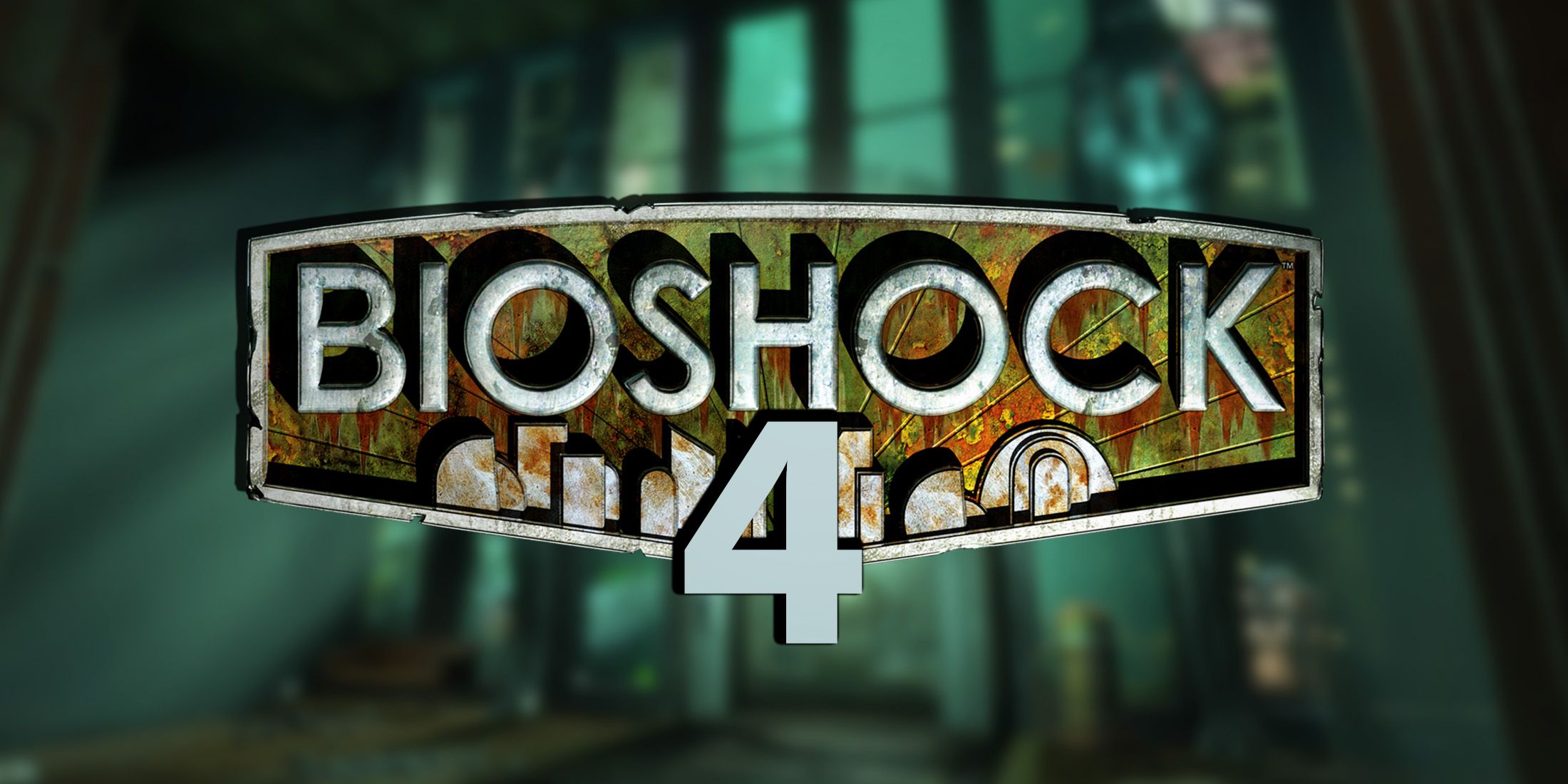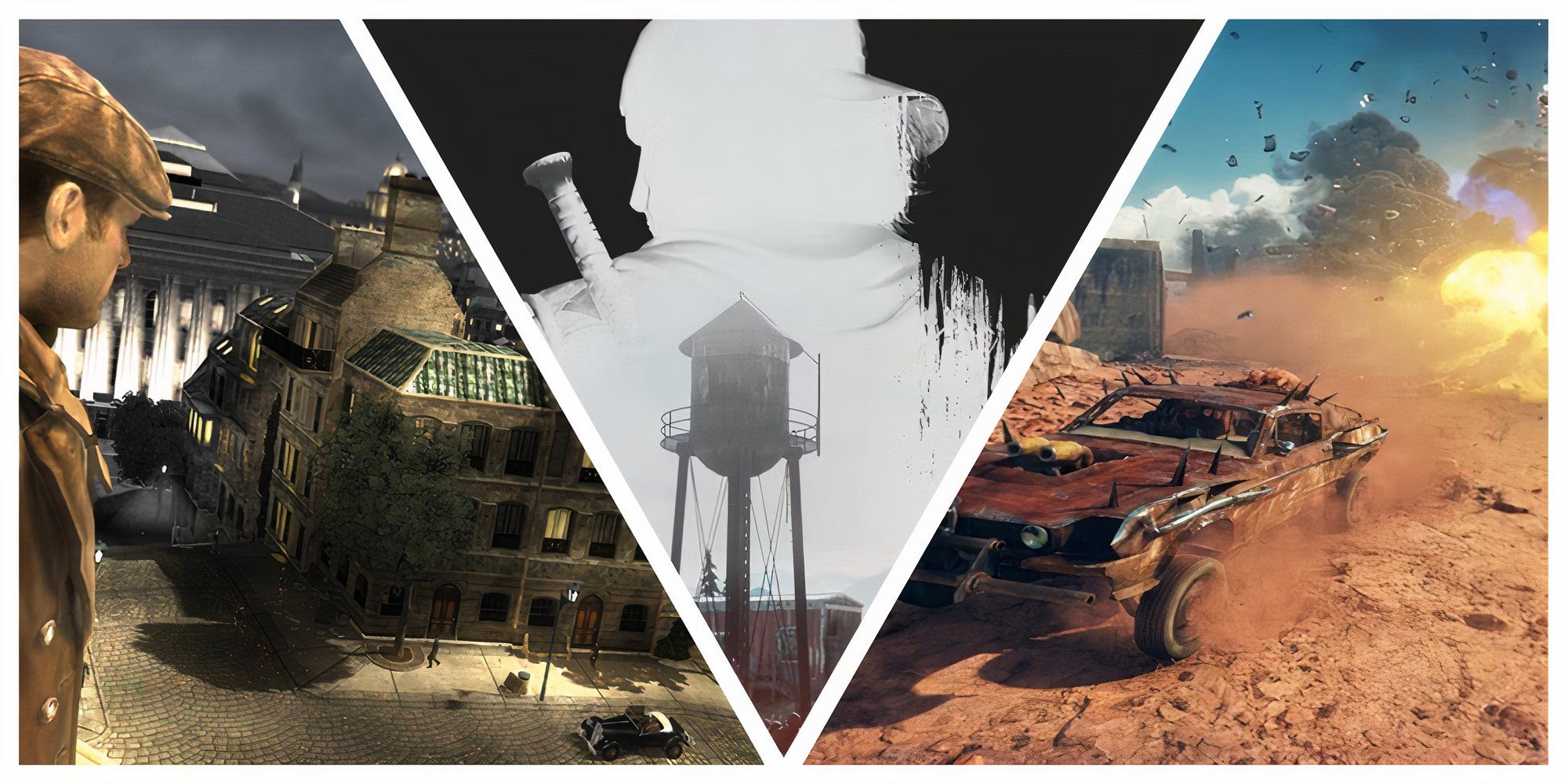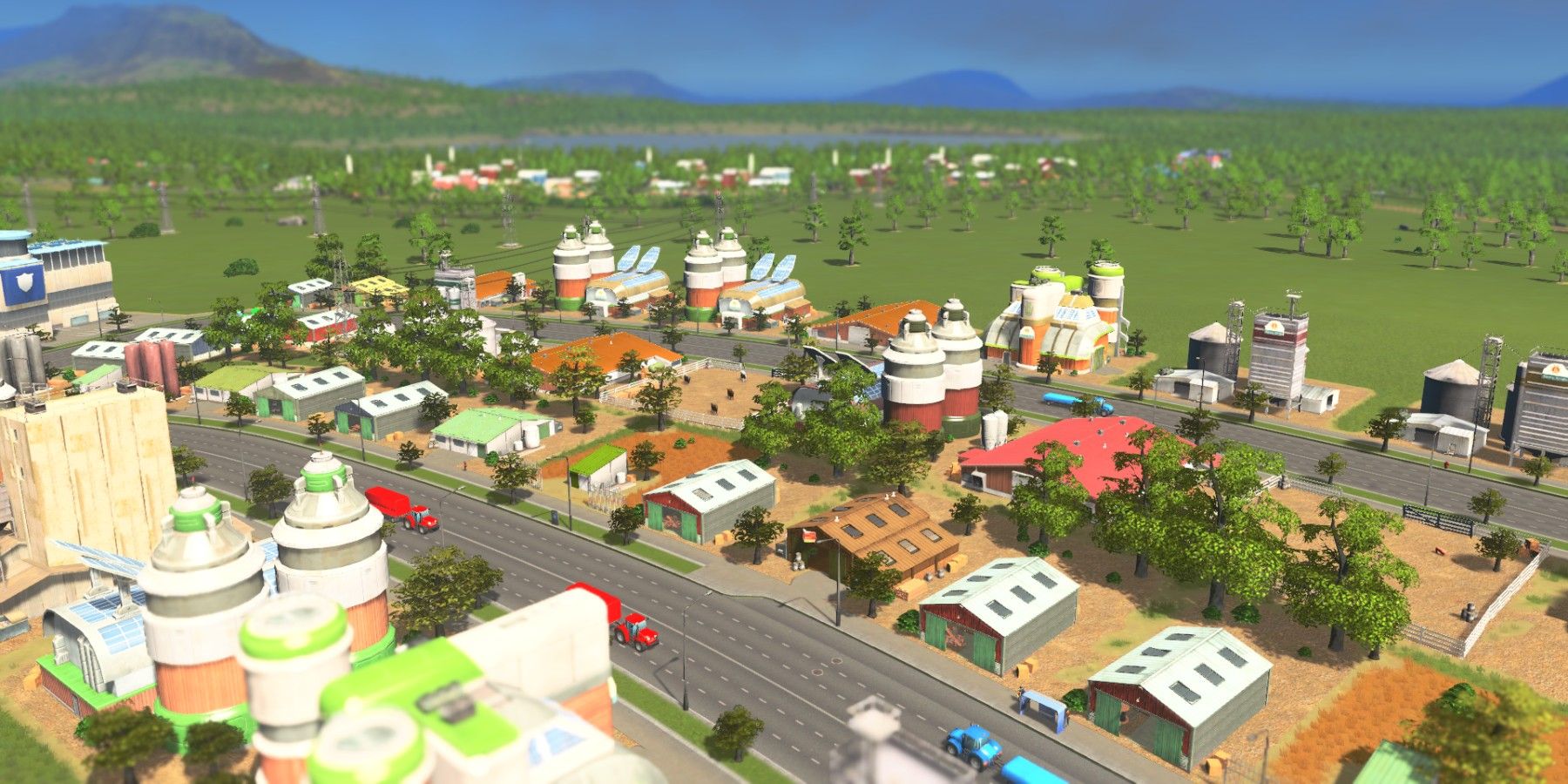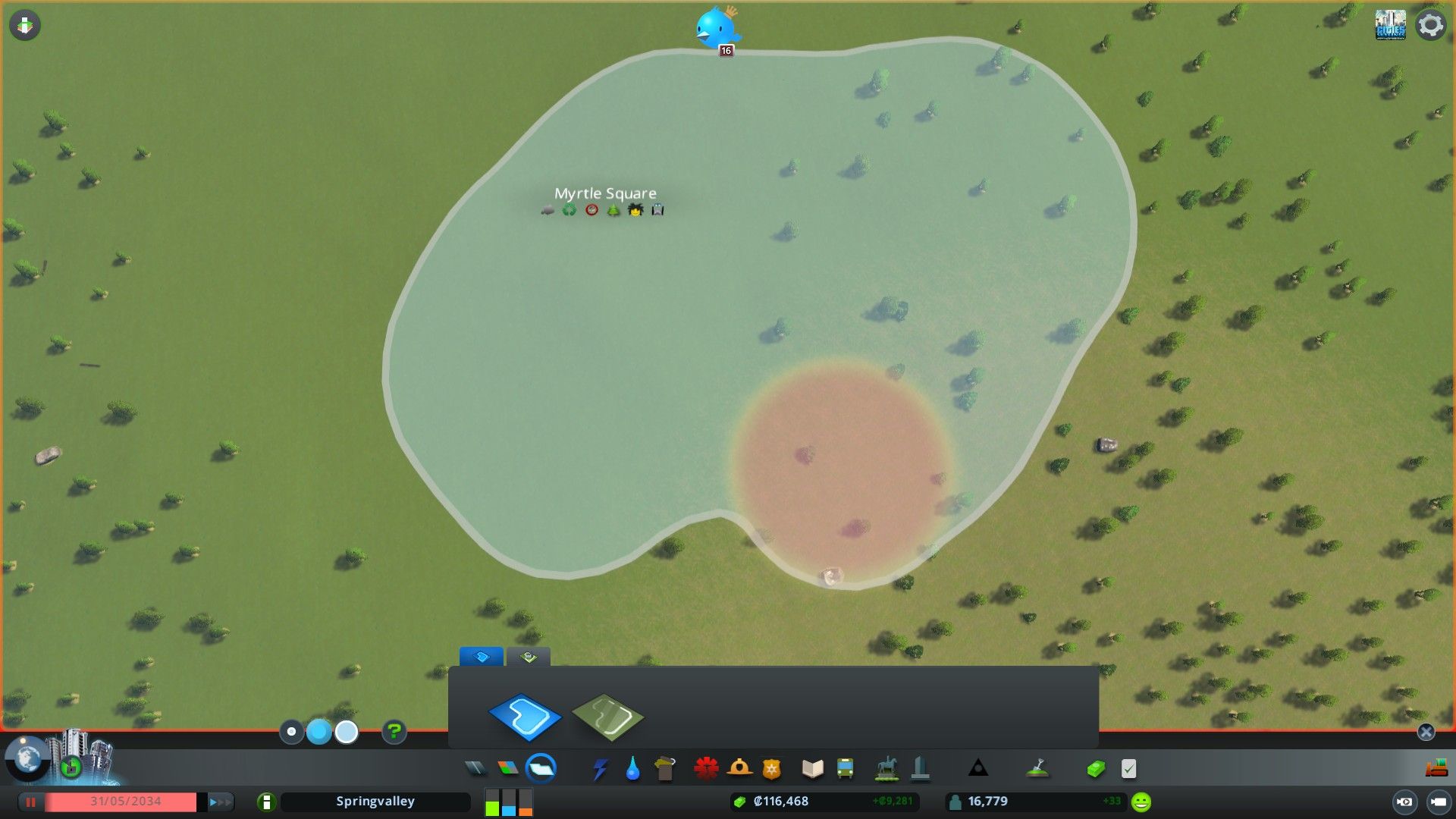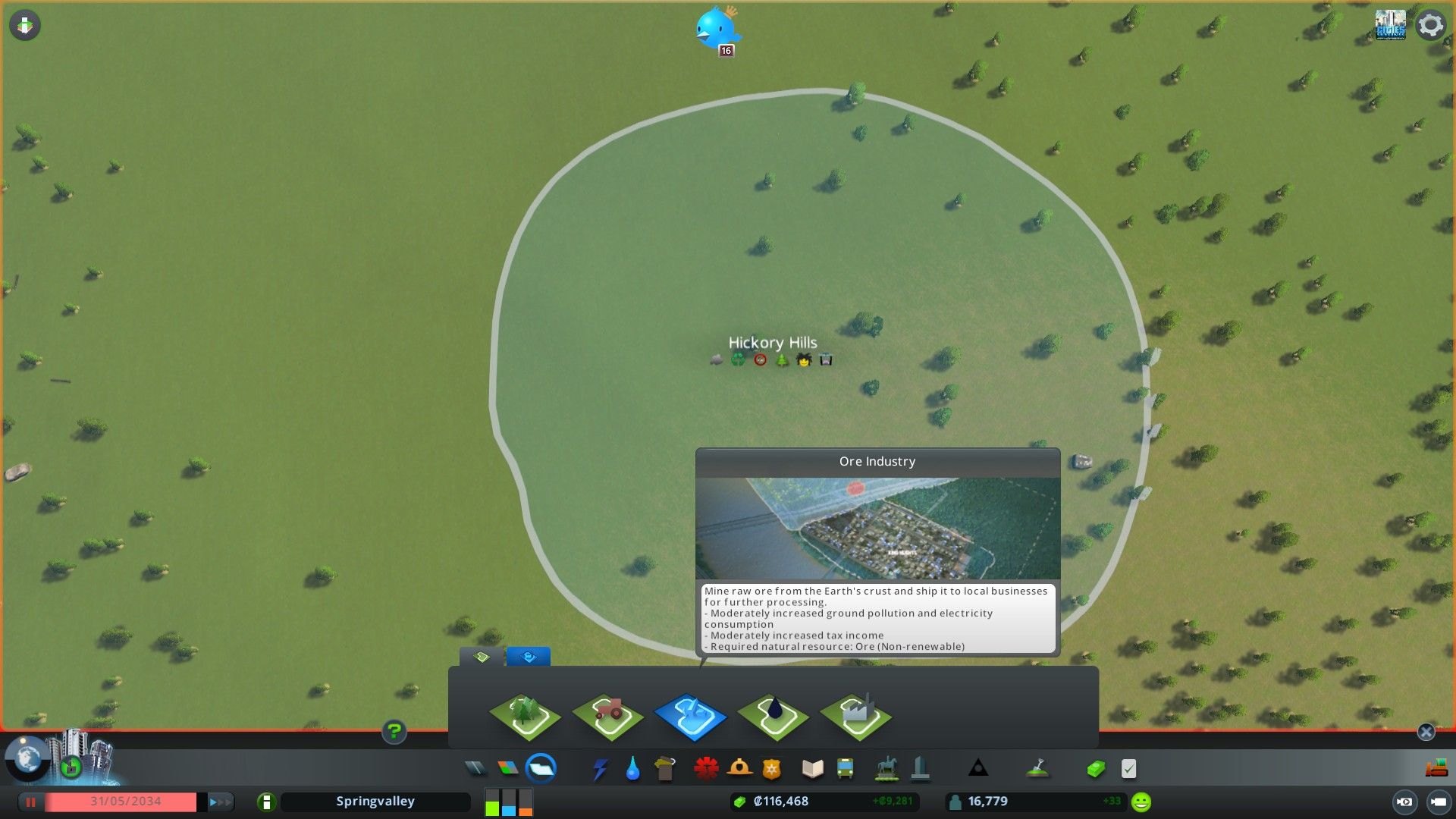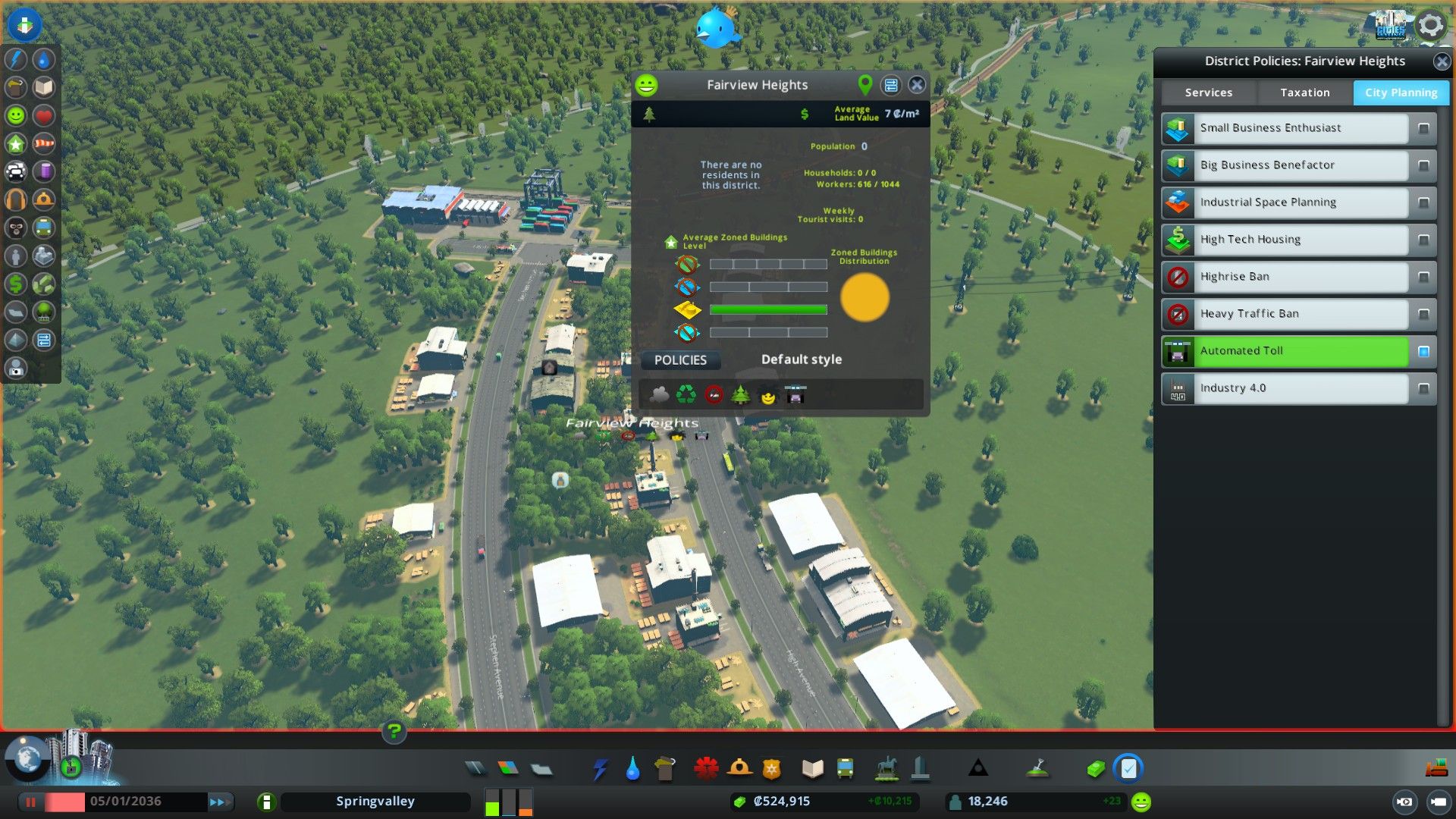Industry isn't just industry in Cities: Skylines. While industrial zones start out with polluting factories, an educated workforce can upgrade these buildings into high-tech businesses that are better for the environment.
Another option is to create a specialized industrial area. As soon as players reach the 850 population milestone, Cities: Skylines unlocks both the district tool and the ability to create specialized industrial zones. It might not be clear at first how these two new systems interact, but players can use them to avoid polluting industries or otherwise take advantage of the natural resources on the map.
How to Create Districts
Once districting unlocks, players will see a new option next to the street and zone buttons on the interface. This is the district creation tool, and when it's selected players will see a large red circle on the map. Click and drag this circle to "paint" an area and turn it into a new district. This tool has large, medium, and small brush sizes, and it can snap to roads if players move it slowly.
Every building inside the painted area belongs to the newly created district. Each district spawns with a generic name, but players can rename them the same way they can rename roads or the city itself. The other tool in this menu erases districts the same way the normal tool creates them, which means players will need to erase them one piece at a time. Players can also create new districts by starting to paint in a new area, and they can replace an existing district by painting over it.
How to Specialize Districts
Players will notice a second tab in the district creation menu. This is where the industrial specializations are, and in the base game there are five specializations to choose from:
- The forest industry delivers slightly more in taxes then regular industry buildings, and it doesn't pollute, but they use slightly more electricity and need to be close to heavy forests.
- The farming industry is also slightly more profitable than normal, and it also doesn't pollute. However, it uses a lot more water and must be close to fertile lands.
- The ore industry offers a moderate boost to tax profits, but it creates more pollution than normal, requires a lot more electricity, and uses up the non-renewable ore resource.
- The oil industry is the most profitable industrial specialization, but it also creates the most pollution and uses the most electricity, plus oil is a non-renewable resource.
- The last item on the list is "Generic Industry." Players can use this to reset an industrial district back to normal.
In each case, players will need the industrial district to include an area with the appropriate resource. The best way to look for this is to go to the Info View and choose "Natural Resources," which is the icon with three green shapes. This shows a view of the map that highlights each resource in its own color: black is oil, blue is ore, green is forest, and yellow is fertile land.
By selecting a specialization, all industrial zones in the district will only create buildings connected to the industry. This means farms for farming districts, furniture factories and lumber mills for forests, and so on. These buildings only have one upgrade level (at least in the base game), which means they can't improve as the city's education level goes up. Players can create a demand for educated jobs using the "Industry 4.0" policy, but the sudden switch from uneducated to highly educated workers may cause problems with worker supply.
District Policies
The other reason to create districts is so players can set policies for each individual district. For instance, players can set one industrial district to "Industry 4.0" to create a demand for educated workers while letting other districts take on uneducated workers.
Players can also use districts to apply policies that wouldn't work across the whole city. For instance, setting the Heavy Traffic Ban in a district can keep trucks out of quiet neighborhoods while letting industrial and commercial zones maintain their resource deliveries. This can also be a way to test out new policies on a small area instead of rolling it out citywide right away.
One last thing players can do with districts is adjust the tax rate within neighborhoods. The taxation policies allow players to adjust the tax rate 2 percent up or down from the city rate, so players can use taxes as a way to encourage growth in a specific area.
Cities: Skylines is available now on PC, PS4, Switch, and Xbox One, and it's coming to PS5 and Xbox Series X/S on February 15.


